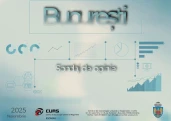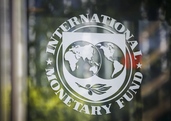Almost one in five Romanians was affected by poverty in 2024, and about 19.0% of the usually resident population lived in a household with an equivalised disposable income below the at-risk-of-poverty threshold, which is set at 60% of the median equivalised disposable income after social transfers, according to data published on Monday by the National Institute of Statistics (INS).
Estimated on the basis of the total disposable income, excluding the equivalent value of the consumption from the household's own resources, the at-risk-of-poverty rate (AROP) was 19.0% in 2024, 2.1% lower than the previous year, agerpres reports.
In absolute terms, the number of poor people amounted to 3,595,000 persons in 2024, 375,000 persons less than in 2023, i.e. a decrease of 9.4% in the number of poor people.
The at-risk-of-poverty rate by gender in 2024 was 0.1% higher for women than for men (19.0% as against 18.9%). The at-risk-of-poverty rate of the persons living in households with dependent children was 22.6% in 2024 (lower by 2.5% than the one of 2023, but higher by 8.6%than that of the persons living in households without dependent children).
If, in 2024, pensions and the other social transfers had not been paid, two fifths of the population (41.4%) would have lived below the at-risk-of-poverty threshold and, obviously, the situation would have worsened for elderly people (aged 65 years or over), as 84.8% of them would have been at risk of poverty. The same situation would have been reported for persons aged 55-64, but to a much lower extent (43.6%)
In 2024, the severe material and social deprivation rate was 17.2%, a decrease of 2.6% from the previous year. The total number of persons affected by severe material and social deprivation amounted to 3,266,000 persons in 2024, of whom 52.9% women and 47.1% men.
The severe material and social deprivation affects the population to different degrees, depending on the age group and the income of the household. In 2024, the incidence of severe material and social deprivation is mainly higher in persons under 18 years of age (21.2%) and in elderly persons aged 65 years or over (19.6%).
In 2024, 615,000 persons of those under 65 years of age lived in households with very low work intensity (households where working-age adults worked less than 20% of their work-time potential).
The number of people in households with very low work intensity decreased by 0.9 % year-on-year (4.3% as against 5.2%).
A breakdown of these people by gender shows that the number of women exceeded that of men by 89,000 persons in 2024. The share of the persons under 65 years of age living in households with very low work intensity is higher for women than for men, by 1.4 % (5.0% of women as against 3.6% of men).
The at risk of poverty or social exclusion rate (AROPE) was 27.9% in 2024, corresponding to 5.3 million persons.
There is a drop of 4.1 % in the value of the indicator compared to 2023, which is a decrease of 739,000 persons. The at risk of poverty or social exclusion rate affects women to a greater extent than men (28.4% of women and 27.4% of men).
Age plays an important part, with the AROPE indicator being higher for persons aged 0-17 years (33.8%) and young people aged 18-24 years (31.3%) and lower for persons aged 25-49 years (22.9%) in 2024.
The persons living in households without dependent children are at a lower risk of poverty or social exclusion (24.5%) than the persons living in households with dependent children (30.4%)
The highest incidence of the AROPE indicator in 2024 was reported in the households consisting of two adults with three or more dependent children (50.9%), followed by the households with three or more adults with children (37.2%) and single-parent households, with a 36.5% incidence.
As regards the households without dependent children, the highest incidence was reported in single-person households (34.7%), compared with 17.6% in the households with three or more adults.
The risk of poverty or social exclusion also varies depending on the region. Its highest rate was reported in the Sud-Est region (39.7%), followed closely by the Sud-Vest Oltenia region (35.1%), and its lowest rate was that of the Bucharest-Ilfov region (12.0%).

































Comentează